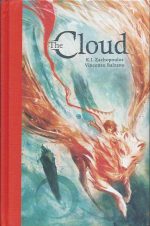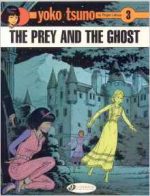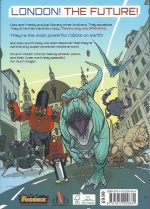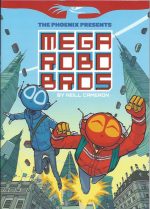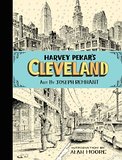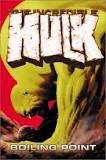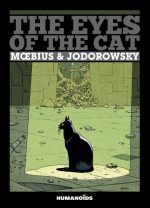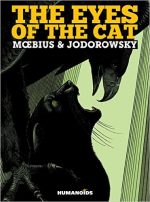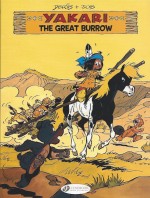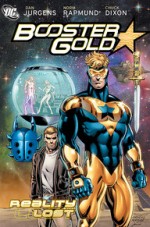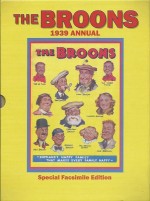
By R.D. Low & Dudley D. Watkins (D.C. Thomson/Aurum)
ISBN: 978-0-85116-
The Broons is one of the longest running newspaper strips in British history, having appeared well-nigh continuously in Scottish periodical The Sunday Post since the March 8th edition of 1936. That same issue launched equally timeless cartoon stable-mate and icon of Hibernian tradition Oor Wullie: a mischievous wee laddie who epitomises carefree youthful excess.
Both the boisterous boy and the gregariously engaging working class family were co-created by journalist, writer and Editor Robert Duncan Low in conjunction with DC Thomson’s most celebrated cartoonist Dudley D. Watkins. Both were overnight hits and instantly unmissable so within a few short years the weekly episode strips began to be collected in reprint editions as Seasonal Annuals. Those books alternated stars and years right up to the present day.
The book under discussion here comes from 2006: a magnificent recreation of that first Broons Annual compendium as launched in 1939. It’s a sturdy hardback with monochrome interiors, crammed full of gags and wholesome family fun delivered with gleeful exuberance by masters of the comedy comics form, lavishly presented in its own card slipcase.
Low (1895-1980) began at the Scottish publishing monolith as a journalist and quickly rose to the post of Managing Editor of Children’s Publication. Between 1921 and 1933 he created the company’s “Big Five†story-papers for boys: Adventure, The Rover, The Wizard, The Skipper and The Hotspur. These were text-base adventure weeklies liberally illustrated and in 1936 his next brilliant idea was the Fun Section: an 8-page pull-out comic strip supplement for Scottish national newspaper The Sunday Post.
As cited above this landmark illustrated accessory began on 8th March and from the very outset The Broons and Oor Wullie were its undisputed top draws…
Low’s shrewdest notion was to devise both strips as comedies played out in the charismatic Scottish idiom and broad unforgettable vernacular where – supported by features such as Auchentogle by Chic Gordon, Allan Morley’s Nero and Zero, Nosey Parker and other strips – they laid the groundwork for the company’s next great leap.
After some devious devising in December 1937 Low premiered the first DC Thomson weekly comic. The Dandy was followed by The Beano in 1938 and early-reading title The Magic Comic in 1939.
War-time paper shortages and rationing sadly curtailed the strip periodical revolution, and it was 1953 before the next wave of cartoon caper picture paper releases. The Topper started the ball rolling again (with Wullie in the logo and masthead but not included in the magazine’s regular roster) in the same year that Low & the great Ken Reid created Roger the Dodger for Beano…
Low’s greatest advantage was his prolific illustrator Dudley Dexter Watkins, whose style, more than any other, shaped the look of DC Thompson’s comics output until the bombastic advent of Leo Baxendale shook things up in the mid-1950s.
Watkins (1907-1969) had started life in Manchester and Nottingham as a genuine artistic prodigy before entering Glasgow College of Art in 1924. It wasn’t long before he was advised to get a job at burgeoning, Dundee-based DCT, where a 6-month trial illustrating boys’ adventure stories led to comic strip specials and some original cartoon creations.
Percy Vere and His Trying Tricks and Wandering Willie, The Wily Explorer made him a dead cert for both lead strips in the Sunday Post‘s proposed Fun Section and, without missing a beat, Watkins later added The Dandy‘s Desperate Dan to his weekly workload in 1937, eventually including The Beano‘s placidly and seditiously outrageous Lord Snooty seven months after.
Watkins soldiered on in unassailable triumph for decades, drawing some of the most lavishly lifelike and winningly hilarious strips in illustration history. He died at his drawing board on August 20th 1969.
For all those astonishingly productive years he had unflaggingly drawn a full captivating page each of Oor Wullie and The Broons every week, and his loss was a colossal blow to the company.
DC Thomson’s chiefs preferred to reprint old Watkins episodes of both strips in the newspaper and the Annuals for seven years before a replacement was agreed upon, whilst The Dandy reran Watkins’ Desperate Dan stories for twice that length of time.
An undeniable, rock-solid facet of Scots popular culture from the very start, The Broons reflected changing times and ordinary life for generations of readers; sharing trials and triumphs and celebrating each changing year with unflagging wit, warmth and inspired, self-deprecating buffoonery. For fans outside Scotland – like me – they always conjure feeling of holidays and special moments, so on this wet Bank Holiday (it’s always raining somewhere on a public vacation day) I’m reliving a halcyon time…
So What’s the Set Up?: the multigenerational Brown family inhabit a tenement flat at 10 Glebe Street, in the timelessly metafictional Scottish industrial everytown of Auchentogle (or sometimes Auchenshoogle), based in large part on the working class Glasgow district of Auchenshuggle. As such it’s an ideal setting in which to tell gags, relate events and fossilise the deepest and most reassuring cultural archetypes for sentimental Scots wherever in the world they might actually be residing. And yes, a huge part of the laugh track comes from the gloriously rich accent humour deriving from the Scots idiom and cultural consciousness.
If it’s good enough for Sir Harry Lauder, Andy Stewart, Stanley Baxter, Bill Forsyth, Chic Murray, Billy Connolly, Craig Ferguson, Frankie Boyle, Susan Calman…
As is always the case, the adamant, unswerving cornerstone of any family feature is long-suffering, understanding Maw, who puts up with cantankerous, cheap know-it-all Paw, and a battalion of stay-at-home kids comprising hunky Joe, freakishly tall Hen (Henry), sturdy Daphne, gorgeous Maggie, brainy Horace, mischievous twins Eck and the unnamed “ither ane†plus a wee toddling lassie referred to only as “The Bairnâ€.
Not officially in residence but always hanging around is gruffly patriarchal clod Granpaw – a comedic gadfly who spends more time at Glebe Street than his own cottage and constantly tries to impart his decades of hard-earned but painfully outdated experience to the kids… but do they listen?
In later years they family would grow a bit better off, taking regular breaks from the inner city turmoil whilst simultaneously sentimentalising, spoofing and memorialising more traditional times at their But ‘n’ Ben (a dilapidated rustic cottage in the Highlands) but in these initial pre-war tales the range of any excursion is simply the inner city and wherever a day-trip by charabanc or steam train can take the bustling, boisterous clan…
The endless escapades of these formative strips comprise timeless subject-matter such as oldster’s teasing young ‘uns about their beaus, males thinking they know best whether its cleaning fire-grates, mopping floors or organising parties, or females jockeying for social status. You can learn the real cost of a “bargainâ€, the wisdom of holding your tongue and the value of one night of actual peace and quiet…
All the kids live in a comfortably secure world of playing, pranking and stopping out late, whilst neighbours are equal parts pains-in-the-necks and salts-of-the-earth. But as well as slapstick shenanigans – ranging from plumbing pitfalls, decorating disasters, fireplace fiascos, food foolishness, dating dilemmas, appliance atrocities, fashion freak-outs, party panics, bothered Bobbies, excessive exercising, chore-dodging, galling goofs, family frolics and sly jests – there’s a sense of unified purpose and progress made, with the Broons part of a proper working community.
The overall impression is that, unlike today when the phrase is no more than cynically exploitative lip-service from a crass, glib plutocracy intent on disempowering everyone poorer than themselves, folks back then were genuinely “all in it together†just to get by.
And Low and Watkins made it funny and rewarding…
Packed with all-ages fun, rambunctious hilarity and deliriously domestic warmth, this exemplary example of happy domesticity convivially celebrates a mythic lost life and time and is a sure cure for post-modern glums…
The Broons ™ and © D.C. Thomson & Co., Ltd. 2006.
